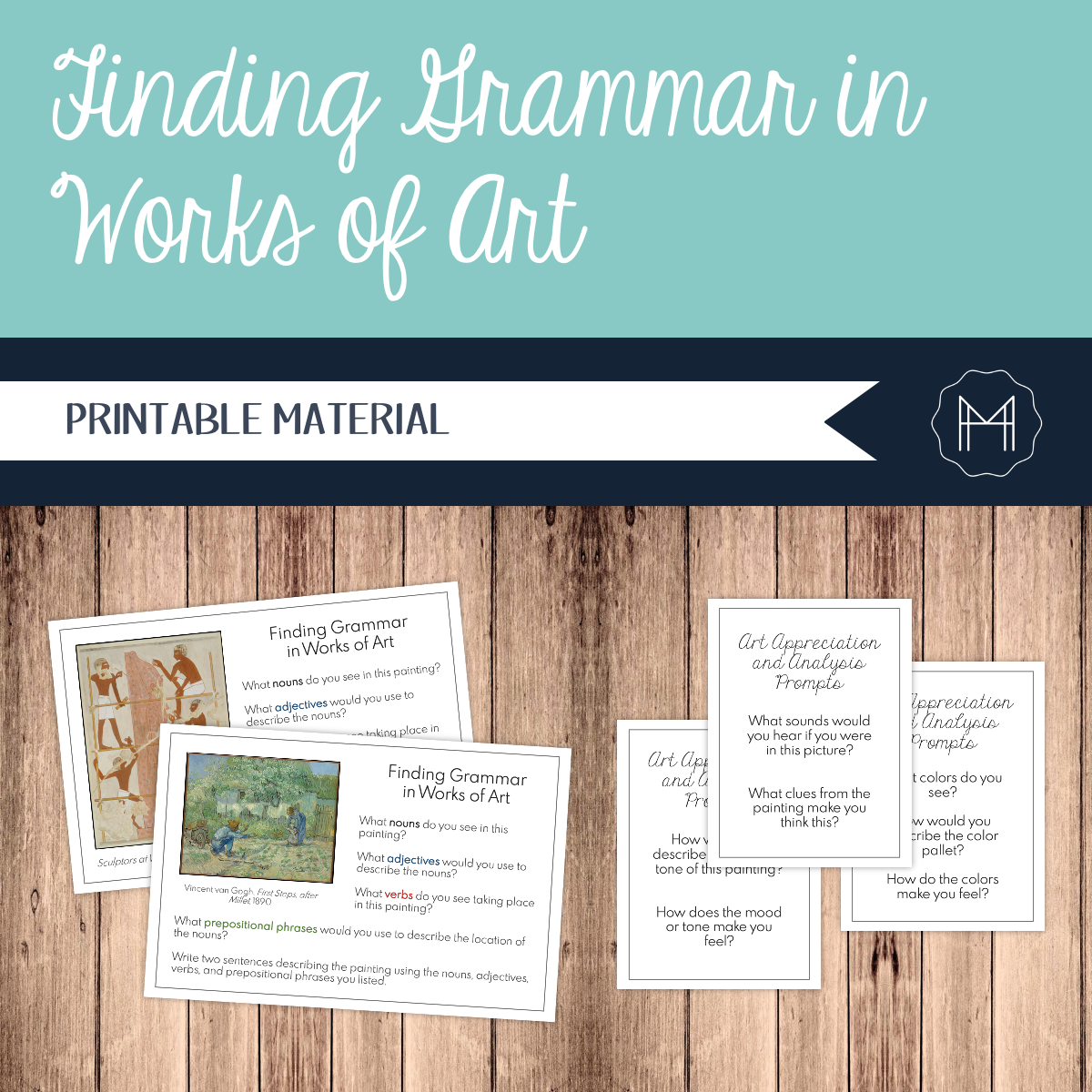The Modern Montessori Guide
Finding Grammar in Works of Art
Couldn't load pickup availability
This activity provides students with a creative extension for grammar review. When examining a piece of art, I challenge children to approach it as if they are reading the image. They can begin by skimming the illustration and then dig deeper, analyzing all the nooks and crannies.
Each task card contains an image, a caption identifying the artist, title, and creation date, and a series of directions pertaining to grammar. These directions use the Montessori grammatical colors as a visual cue. There are 14 works of art total including:
- Edgar Degas, The Dance Class, 1874
- Edgar Melville Ward, The Coppersmith, 1898
- James M. Sommerville, Ocean Life, 1859
- Pieter Bruegel the Elder, The Harvesters, 1565
- Paul Cézanne, The Card Players, 1890
- Sculptors at Work, 1479–1425 B.C.E.
- William Trost Richards, Purgatory Cliffs, 1876
- Nicolaes Maes, Young Woman Peeling Apples, 1655
- Utagawa Hiroshige, Woman Walking in the Snow, 1840’s
- Fritz von Uhde, Going Home, 1889
- Arthur Fitzwilliam Tait, Doe and Two Fawns, 1882
- Auguste Renoir, Two Young Girls at the Piano, 1892
- Auguste Renoir, Figures on the Beach, 1890
- Vincent van Gogh, First Steps, after Millet, 1890
In addition to the grammatical components, I have included “Art Appreciation and Analysis Prompts” that can be used alongside any of the images as an extension.
I recommend creating a “Grammar in Art” notebook that can be used to record the parts of speech and descriptive sentences for each piece of art. I have included independent images of each painting that could be cut out and pasted into the student’s notebook. Additionally I’ve also included models using the Montessori Parts of Speech symbols to help guide sentence construction. If you are looking for a review of the Parts of Speech, download a free copy of my Grammar Symbol Series explanation packet.
All images are categorized as Public Domain through the Metropolitan Museum of Art.
Share


